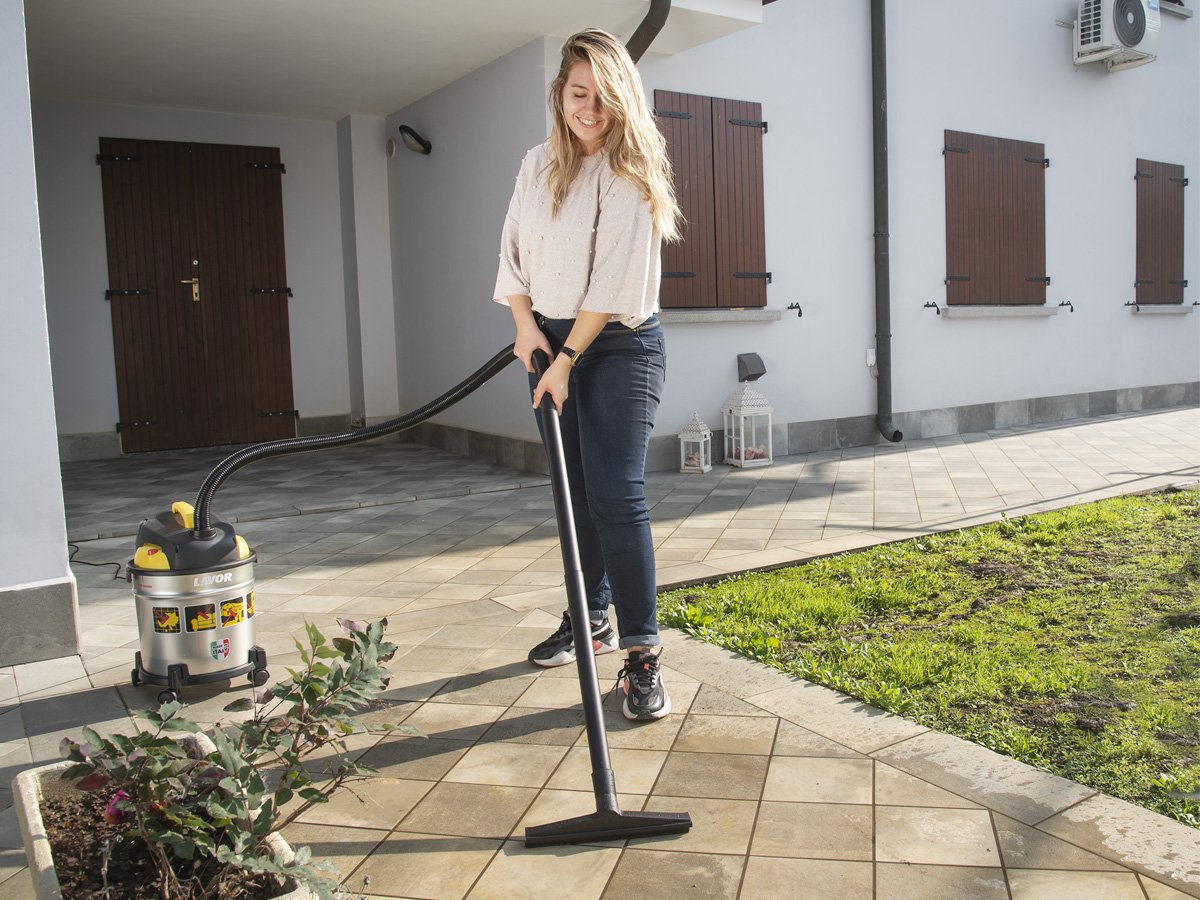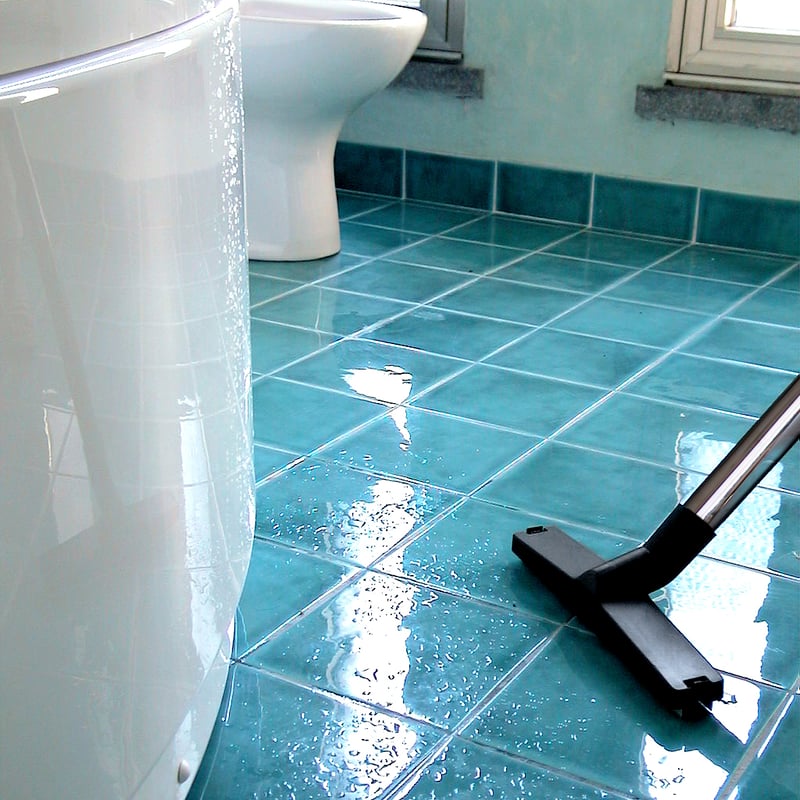What it is, how it works and what are the benefits of the vacuum bin: the complete guide

When the days fly by, but cleaning your home remains a priority, the only solution is to choose household cleaning products allowing you to take action quickly, stress-free and effortlessly.
To help you take care of your home, Lavor has designed a series of complete, versatile and easy-to-use solutions that can adapt to your every need, both indoor and outdoor. Among the many tools on offer, one of the most popular is the vacuum bin, which removes coarse debris, dust and liquids in just one go, thus simplifying every cleaning task.
How to choose the perfect vacuum bin for your home
A lived-in home is in danger of turning into a veritable battleground, even in a matter of minutes, and if your passions include hobbies and do-it-yourself activities, every hour of manual labor is followed by an hour of intense yard and garage cleaning.
Tidying up, sweeping, drying, degreasing and peeling are actions that require a great deal of time, and once these activities are finished... it seems like it is already time to start again.
With a vacuum bin, keeping your floors clean, ridding them of dirt, both solid and wet debris or even liquids is a quick and easy process that allows you to experience your home safely, without stress and fatigue. But what is it, how does it work and what are the benefits of this household cleaning tool? In this article we answer the 10 most common questions about the vacuum bin and how to choose the perfect product for your home.
1) What is a vacuum bin?
A vacuum bin is a very versatile type of vacuum cleaner, usually with a large collection tank, which is ideal for collecting debris, dust and liquids, leaving every surface clean, even after a single sweep. This solution is particularly suitable for cleaning indoor and outdoor surfaces, carpets, upholstery and for clearing garage and shed floors for hobbyists and do-it-yourselfers.

In fact, vacuum bins are ideal for:
- Home use, with models having power between 1200W to 1600W;
- Industrial use, with models ranging in power from 1600W to 3700W.
The structure of a vacuum bin consists of:
- a motor, which generates the suction power and ensures the effectiveness of the product;
- a collection tank, made of plastic or stainless steel;
- a filter, which can be cartridge, bag or suitable for foam sucking;
- a flexible hose, ideal for directing the suction flow according to one’s needs;
- Compatible accessories, which ensure product versatility, such as nozzles of various shapes and brushes.
2) Difference between a vacuum cleaner, a wet&dry vacuum cleaner and an ash vacuum cleaner.
While characterized by their suction power, these three products have different functions that make them unique and high-performing in specific cases:
- A vacuum cleaner is a standard product, mainly intended to remove dust and small and medium-sized debris from surfaces. This is an effective but basic solution: major vacuum cleaner models are in fact without special filters or insulators, so vacuuming special materials such as ash and liquids could damage them;
- The wet&dry vacuum cleaner, better known as vacuum bin, is a more complex type of vacuum cleaner, ideal for sucking up small, medium and large-sized debris as well as liquids or wet substances. Here, the motor is more powerful than in standard models, and the filtering system is designed to manage the presence of liquids and moisture;
- An ash vacuum cleaner is a type of vacuum cleaner that features a complex filtering system designed to remove very small debris and dust, such as cold ash from fireplaces, stoves and barbeques. Here, the filter traps even the smallest particles, preventing them from scattering inside the machine and clogging its suctioning parts.
3) What can be suctioned with a vacuum bin?
The vacuum bin can be used in both professional and home environments, and can remove liquid and solid substances such as:

- Water, spilled drinks, waste liquids, gushing;
- Mud, debris, gravel;
- Foliage and pine needles;
- Shavings, sawdust, lumber, waste paper and all dirt produced during DIY;
- Animal hair, organic substances;
- Dust, rubble and coarse debris from construction sites and construction companies.
4) Stainless steel or plastic vacuum bin? With bag or without? Which one is best to choose?
In order to choose the most suitable vacuum bin for your needs, one of the most important aspects to consider is whether to choose the plastic or stainless steel bin. This depends on your use of it:
- Plastic bins are cheaper, lighter and easier to transport. The walls are smooth and easy to clean and retain liquids effectively. At the same time, however, they are less resistant to impact and could be damaged when used on particularly sharp or large debris.
We recommend that you choose the plastic bin for occasional, household use for cleaning surfaces from everyday dirt; - Stainless steel bins cost more and are less easy to handle, but they provide longer life and impact strength. This material is perfect for vacuuming liquids and wet materials. In fact, even after heavy use, it resists rusting and corrosion.
We recommend that you choose the stainless steel bin for frequent and heavy use, and especially on coarse and wet material.
The use of the bag may also influence your choice. In this case, however, it is important to know that the models provided with a bag can also be used without, depending on your specific usage needs and personal taste:
- The bag provides more hygiene and preserves the cleanliness of your vacuum bin. By using it you can remove sucked-in dirt quickly, changing it every time it is full or you need it. At the same time, the bag increases operating costs and takes up space inside the tank;
- The bag should be avoided in the case of large debris, which could damage and puncture it, such as rubble or crushed stone. In addition, this solution offers greater suction capacity.
5) How to clean the filter of the vacuum bin?
The filter is a protection that is always applied to the vacuum bin as a basic motor protection. In fact, this solution makes it possible to prevent sucked-in dust and debris from ending up in the motor, damaging it permanently.
Whenever the filter needs it, it is recommended to wash it under running water (in case of washable filter), so as to remove the encrusted dirt. Before reusing it, it is necessary to dry it carefully.
In the case of filters that cannot be washed, it is advisable to blow them out with a compressor to drive away the dirt hidden in the fibers and return the filter to its full functions.
6) Can I suck up thicker or foaming liquids?
A vacuum bin is not the best solution for sucking up thick liquids or foam, but it can be done with some care:
- Use filters suitable for collecting foam. In fact, this substance can irreversibly damage the engine, making the vacuum bin permanently unusable;
- Use a model with a powerful motor and a wide suction hose so as to avoid clogging;
- Thoroughly clean the bin after using it to vacuum foam.

7) How can I drain the sucked-in liquids?
The way to drain the liquids collected by the vacuum bin varies from model to model. Generally, it is possible to do so:
- By removing the drain plug located at the bottom of the tank (in models equipped with a drain plug);
- By emptying the tank directly by tipping it over (if there is no drain plug);
- By using the pump, if built in. This mode is often found in industrial-type models to simplify emptying and maintenance.
8) What accessories are available for the vacuum bin?
Vacuum bins are multifunctional and very versatile equipment and they come with various accessories that simplify and enhance their use, such as:
- Hose of various lengths;
- Rigid plastic or steel extension tubes, sometimes telescopic;
- The brush with bristles for vacuuming dry debris or with squeegees for collecting liquids;
- The flat lance, perfect for vacuuming between the narrowest crevices;
- The paper or microfiber collecting filters to collect dry, solid debris;
- The sponge filter, ideal for sucking up liquids;
- The cartridge or HEPA filter, for dry debris;
- The washable and reusable cartridge filter for vacuuming solids;
- The small round brush with bristles;
- The radiator brush.
9) Can I use the vacuum bin in outdoor spaces?
Yes, the vacuum bin can also be used outdoors to rid patios, driveways and all kinds of pavement of slush, crushed stone, foliage, pine needles and all kinds of organic residual dirt.
Thorough cleaning of the product is always recommended after external use to avoid damage and deterioration of internal components.
Some bins are also provided with a practical and useful blower function to push away and group debris to make it easier to vacuum.
10) What are the advantages of using a vacuum bin?
The vacuum bin is your ally in household cleaning, hobbies and DIY because it allows you to remove small, medium and large debris, as well as wet material and liquids, in just one go.
Some of the main benefits of using this tool are:
- Speed of cleaning, even on the most difficult materials such as sawdust, shavings, foliage and small debris.
- Tank capacity, which allows even medium and large debris, such as rubble, to be collected;
- Low expenses, partly due to the possibility of using washable and reusable bags and filters;
- Versatility, with the many compatible accessories, allowing it to be used on different types of flooring, as well as on carpets, upholstery, rugs, car seats, and outdoor patios.
The vacuum bin is the ideal choice if you are looking for a versatile, powerful and durable vacuum cleaner to suck in both solids and liquids effectively and quickly. Streamline your cleaning efforts, support your passions and keep your home neat, stress-free and effortless.

-1.jpg)
